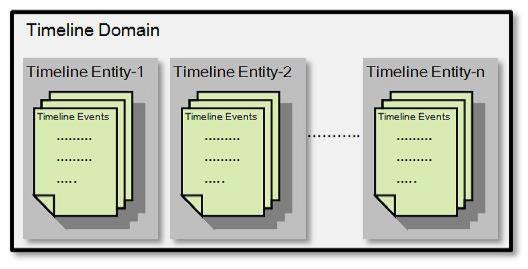1
2
3
4
5
6
7
8
9
10
11
12
13
14
15
16
17
18
19
20
21
22
23
24
25
26
27
28
29
30
31
32
33
34
35
36
37
38
39
40
41
42
43
44
45
46
47
48
49
50
51
52
53
54
55
56
57
58
59
60
61
62
63
64
65
66
67
68
69
70
71
72
73
74
75
76
77
78
79
80
81
82
83
84
85
86
87
88
89
90
91
92
93
94
95
96
97
98
99
100
101
102
103
104
105
106
107
108
109
110
111
112
113
114
115
116
117
118
119
120
121
122
123
124
125
126
127
128
129
130
131
132
133
134
135
136
137
138
139
140
141
142
143
144
145
146
147
148
149
150
151
152
153
154
155
156
157
158
159
160
161
162
163
164
165
166
167
168
169
170
171
172
173
174
175
176
177
178
179
180
181
|
public class MyYarnClient {
static private Logger log = Logger.getLogger("my-yarn-client");
public static void main(String[] args) throws IOException, YarnException {
YarnConfiguration conf = new YarnConfiguration();
// Set the address of the YARN ResourceManager
conf.set(YarnConfiguration.RM_ADDRESS, "YARN_HOST:8050");
conf.set(YarnConfiguration.RM_SCHEDULER_ADDRESS, "YARN_HOST:8030");
conf.set(YarnConfiguration.RM_RESOURCE_TRACKER_ADDRESS, "YARN_HOST:8025");
conf.set(YarnConfiguration.RM_ADMIN_ADDRESS, "YARN_HOST:8141");
conf.set(YarnConfiguration.RM_WEBAPP_ADDRESS, "YARN_HOST:8088");
// 1 创建并启动YarnClient
YarnClient yarnClient = YarnClient.createYarnClient();
yarnClient.init(conf);
/*
YarnClient 内容通过 ApplicationClientProtocol 与 ResourceManager 通信,
跟踪进去可以在 YarnClientImpl 找到 rpc,
this.rmClient = (ApplicationClientProtocol)ClientRMProxy.createRMProxy(this.getConfig(), ApplicationClientProtocol.class);
*/
yarnClient.start();
// 2 通过YarnClient创建Application
YarnClientApplication app = yarnClient.createApplication();
// GetNewApplicationResponse 中包含了 ApplicationId, ResourceCapability 等内容
GetNewApplicationResponse appResponse = app.getNewApplicationResponse();
System.out.println(appResponse.getApplicationId());
// 3 完善 ApplicationSubmissionContext 所需内容
// 需要配置 appId、queue、resource、priority 等等
ApplicationSubmissionContext appContext = app.getApplicationSubmissionContext();
ApplicationId applicationId = appContext.getApplicationId();
// 3.1 设置application name
appContext.setApplicationName("my-test-app");
// 3.2 设置ContainerLaunchContext
// localResources, env, commands 等
// application master 的 jar 放到 localResources 中
ContainerLaunchContext amContainerCtx = createAMContainerLaunchContext(
conf, app.getApplicationSubmissionContext().getApplicationId());
appContext.setAMContainerSpec(amContainerCtx);
// 3.3 设置优先级
Priority pri = Priority.newInstance(0);
appContext.setPriority(pri);
// 3.4 设置队列
// appContext.setQueue("default");
appContext.setQueue("default");
appContext.setApplicationName("my-test123");
// 3.5 设置 am 资源
int amMemory = 1024;
int amVCores = 1;
Resource capability = Resource.newInstance(amMemory, amVCores);
appContext.setResource(capability);
// 4 提交Application
// 这里交给 YarnClientImpl 执行 rmClient.submitApplication(request),通过 RPC ApplicationClientProtocol 提交到 RM
ApplicationId appId = yarnClient.submitApplication(appContext);
// 5 获取Application信息
monitorApplicationReport(yarnClient, appId);
}
private static ContainerLaunchContext createAMContainerLaunchContext(
Configuration conf, ApplicationId appId) throws IOException {
// localResources 中存储需要的文件(app master jar、log4j properties 等)
Map<String, LocalResource> localResources = new HashMap<String, LocalResource>();
// todo app master jar 在这里配置
FileSystem fs = FileSystem.get(conf);
String thisJar = ClassUtil.findContainingJar(Client.class);
String thisJarBaseName = FilenameUtils.getName(thisJar);
log.info("thisJar is " + thisJar);
// addToLocalResources(fs, thisJar, thisJarBaseName, appId.toString(), localResources);
//Set CLASSPATH environment
Map<String, String> env = new HashMap<String, String>();
StringBuilder classPathEnv = new StringBuilder(
ApplicationConstants.Environment.CLASSPATH.$$());
classPathEnv.append(ApplicationConstants.CLASS_PATH_SEPARATOR);
classPathEnv.append("./*");
for (String c : conf.getStrings(
YarnConfiguration.YARN_APPLICATION_CLASSPATH,
YarnConfiguration.DEFAULT_YARN_CROSS_PLATFORM_APPLICATION_CLASSPATH)) {
classPathEnv.append(ApplicationConstants.CLASS_PATH_SEPARATOR);
classPathEnv.append(c.trim());
}
if (conf.getBoolean(YarnConfiguration.IS_MINI_YARN_CLUSTER, false)) {
classPathEnv.append(':');
classPathEnv.append(System.getProperty("java.class.path"));
}
env.put(ApplicationConstants.Environment.CLASSPATH.name(), classPathEnv.toString());
//Build the execute command
List<String> commands = new LinkedList<String>();
StringBuilder command = new StringBuilder();
command.append(ApplicationConstants.Environment.JAVA_HOME.$$()).append("/bin/java ");
command.append("-Dlog4j.configuration=container-log4j.properties ");
command.append("-Dyarn.app.container.log.dir=" +
ApplicationConstants.LOG_DIR_EXPANSION_VAR + " ");
command.append("-Dyarn.app.container.log.filesize=0 ");
command.append("-Dhadoop.root.logger=INFO,CLA ");
command.append("trumanz.yarnExample.ApplicationMaster ");
command.append("1>" + ApplicationConstants.LOG_DIR_EXPANSION_VAR + "/stdout ");
command.append("2>" + ApplicationConstants.LOG_DIR_EXPANSION_VAR + "/stderr ");
commands.add(command.toString());
ContainerLaunchContext amContainer = ContainerLaunchContext
.newInstance(localResources, env, commands, null, null, null);
// Setup security tokens 权限认证
if (UserGroupInformation.isSecurityEnabled()) {
Credentials credentials = new Credentials();
String tokenRenewer = conf.get(YarnConfiguration.RM_PRINCIPAL);
if (tokenRenewer == null || tokenRenewer.length() == 0) {
throw new IOException(
"Can't get Master Kerberos principal for the RM to use as renewer");
}
// For now, only getting tokens for the default file-system.
final org.apache.hadoop.security.token.Token<?>[] tokens = fs.addDelegationTokens(tokenRenewer, credentials);
if (tokens != null) {
for (Token<?> token : tokens) {
log.info("Got dt for " + fs.getUri() + "; " + token);
}
}
DataOutputBuffer dob = new DataOutputBuffer();
credentials.writeTokenStorageToStream(dob);
ByteBuffer fsTokens = ByteBuffer.wrap(dob.getData(), 0, dob.getLength());
amContainer.setTokens(fsTokens);
}
return amContainer;
}
private static void addToLocalResources(FileSystem fs, String fileSrcPath,
String fileDstPath, String appId,
Map<String, LocalResource> localResources)
throws IllegalArgumentException, IOException {
String suffix = "mytest" + "/" + appId + "/" + fileDstPath;
Path dst = new Path(fs.getHomeDirectory(), suffix);
log.info("hdfs copyFromLocalFile " + fileSrcPath + " =>" + dst);
fs.copyFromLocalFile(new Path(fileSrcPath), dst);
FileStatus scFileStatus = fs.getFileStatus(dst);
LocalResource scRsrc = LocalResource.newInstance(
ConverterUtils.getYarnUrlFromPath(dst), LocalResourceType.FILE,
LocalResourceVisibility.APPLICATION, scFileStatus.getLen(),
scFileStatus.getModificationTime());
localResources.put(fileDstPath, scRsrc);
}
private static void monitorApplicationReport(YarnClient yarnClient, ApplicationId appId) throws YarnException, IOException {
while (true) {
try {
Thread.sleep(5 * 1000);
} catch (InterruptedException e) {
e.printStackTrace();
}
ApplicationReport report = yarnClient.getApplicationReport(appId);
System.out.println("Got application report " +
", clientToAMToken=" + report.getClientToAMToken()
+ ", appDiagnostics=" + report.getDiagnostics()
+ ", appMasterHost=" + report.getHost()
+ ", appQueue=" + report.getQueue()
+ ", appMasterRpcPort=" + report.getRpcPort()
+ ", appStartTime=" + report.getStartTime()
+ ", yarnAppState=" + report.getYarnApplicationState().toString()
+ ", distributedFinalState=" + report.getFinalApplicationStatus().toString()
+ ", appTrackingUrl=" + report.getTrackingUrl()
+ ", appUser=" + report.getUser());
}
}
}
|


